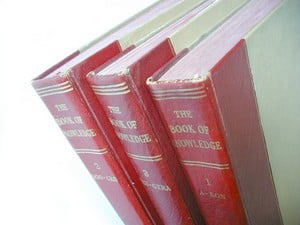The Harlem Renaissance is a term used to distinguish the African American cultural explosion that happened in the 1920s through the 1930s in the Harlem area of New York city. Among the many artists who helped give rise to the Harlem Renaissance were several writers who remain well known and respected to this day. Here is a very brief look at four famous Harlem Renaissance writers.
Langston Hughes. Langston Hughes is maybe the most well-known Harlem Renaissance writers. A poet, his work is distinctly African American in content and details his experience as a Black man. But, at the same time, his writing is very accessible to readers of all races. He is definitely considered a significant American poet. Any kid in high school is likely to have been exposed to his succinct, image-laden poems such as “I, Too, Sing America” which talks in beautiful and angry metaphor about African Americans being kept in society’s back room; or “Harlem (A Dream Deferred”) which questions the consequences of oppression. A verse from the latter poem was used as the title of Lorraine Hansberry’s groundbreaking play “A Raisin In The Sun.” Hughes was also a playwright, novelist and creator of the Jesse Semple aka Simple stories. He was born in Missouri in 1901 and died in 1967 in New York.
Zora Neale Hurston. Zora Neale Hurston was primarily a novelist. Hurston is associated with two places: Harlem and Eatonville, Florida. She worked as a writer during the Harlem Renaissance, publishing short stories like “Spunk” and “Sweat” and novels like Their Eyes Were Watching God, probably her most known work. But Eatonville, the African American run town where she grew up, was the center of much of her work. Her writing often used characters, vernacular, and legends based on life that town. Her work is notable for its incorporation of the culture she grew up around. Her writing also reflected her interests and experience as an anthropologist who tracked folk culture in the Caribbean among other places. Hurston, like Hughes, was quite famous in the 1930s, but unlike Hughes, fell out of circulation until the 1970s when Alice Walker (The Color Purple) rediscovered and repopularized it. Oprah Winfrey has also spread the love of Hurston’s work…. A great biography of Hurston’s very eventful life is Wrapped In Rainbows by Valerie Boyd.
Claude McKay. Claude McKay was born in Jamaica but was an important part of the early Harlem Renaissance. McKay is best known for his novel Home To Harlem which talked unflinchingly about the life of a man in, obviously, Harlem. It gained him popularity but was also controversial. McKay wrote several other novels, too, including Banjo. He was also a noted poet and influence of artists like Langston Hughes. His writing was in a different style than Hughes, but his works reflected the African American struggle. Titles included “If We Must Die” and “The Lynching.” He was also a writer for the left-leaning newspaper The Liberator and wrote other journalist works.
Jessie Fauset. Jessie Fauset was another prominent female writer of the Harlem Renaissance. Her writing included essays and work as literary editor for the NAACP journal The Crises – one of the most significant Harlem Renaissance periodicals and one to which Langston Hughes and other famous writers contributed. Fauset’s most famous writings were novels including The Plum Bun (about passing as white), The Chinaberry Tree and There isConfusion. She also tackled issues like interracial relationships. In contrast to McKay’s Home To Harlem, Fauset’s work often depicted upper-middle class African Americans.
The writing of Harlem Renaissance includes poetry, essays, novels, plays, and short stories that people of any ethnic background can certainly be enriched by. Authors of the time including Hughes, Hurston, McKay and Fauset, have created literature that looks at specific communities in a specific time but that also has stood the test of time.
Reference:
- Work consulted on Jessie Fauset: voices.cla.umn.edu/vg/Bios/entries/fauset_jessie_redmon.html


